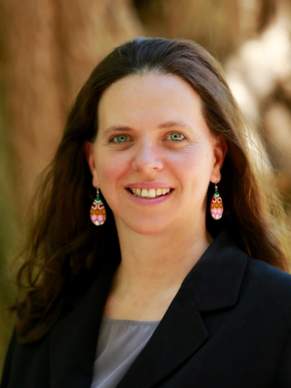We live in interconnected societies. What happens in one country — whether economically, politically or socially — can influence the dynamics of other countries. In turn, the way news is produced and consumed has become a transnational experience.
Academic researchers have studied and discovered that the online environment and globalization has transformed journalism. Today, the news cycle is 24 hours a day, 7 days a week, and social distances to audiences have shortened. This affects how journalists perceive themselves and what they see as their role in society.
Regarding this topic, researchers from Knight Center Research Group Vanessa de Macedo Higgins Joyce, Summer Harlow, Amy Schmitz Weiss, and Rosental Calmon Alves, published Spatial dimensions within hierarchy of influences: How re-conceived notions of space in networked societies impact Latin American journalists.
The research was published last October 13, 2022, in International Communication Gazette.
"This study was done at a time marked by increased transnational connections through social media, as well as global media enterprises and transnational collaborative journalism network taking form in the region," Higgins Joyce told LatAm Journalism Review (LJR). "We wanted to see how these changes of flow of information could contribute to how journalists in Latin America perceive their roles in society, ultimately having the potential to influence changes in how news is produced and what news is produced in the region. This is important because it shows that some normative ideas that were not usually associated with journalism in Latin American journalism may increasingly be part of the practice.”
This study surveyed 1,904 journalists from 20 Latin American countries. Through a survey sent to a universe of more than 15500 subscribers of a non-profit organization. The researchers asked questions at three levels.
First, at the level of organizational structure, they asked how the geographic location of the newsroom influences the perception of the journalistic function as well as how working in transnational collaborative networks influences the perception of the journalistic function.
At the institutional level, they asked how the geo-cultural regions in Latin America influence the perception of the journalistic role. And at a third, broader level, they asked how the use of social networks influences the perception of the journalistic role in Latin America.

Vanessa de Macedo Higgins Joyce, associate professor of journalism at the University of Texas, led this research on how journalists in Latin America perceive their role in society.
From these questions, they hypothesized that "institutional social influence is more likely to predict perceived journalistic functions in Latin America than other levels of influence related to space (organizational structure and broader systemic levels)." Institutional social influence is understood as the influence the geo-cultural region has on the newsroom where the journalist works.
Other studies mentioned in this research show that journalists in Latin America are inclined to play active, participatory and mobilizing roles. This is in contrast to their colleagues in the United States and other Western countries, who play more neutral or observer roles.
“Our study found that, in general, Latin American journalists still perceive the advocate and watchdog roles, where a journalist’s voice and civic roles are emphasized, to be the most important role for journalism in the region, and that is consistent with what other studies have found,” Higgins Joyce said.
“However, our study found that the disseminator and informational roles, a role less commonly associated with journalism in Latin America and more commonly associated with journalists’ roles in Western commercial media systems, is the most impacted by the spatial shifts experienced in a networked society, and increasingly common among journalists who work more connected with such spaces,” she said.
The study shows that journalists who have worked in collaborative transnational investigations emphasize the role of dissemination and information more than those who have not participated in this type of collaboration. This also happens to journalists working for media with an international scope, as opposed to their local counterparts. The more local they were, the more they related to the role of defender and watchdog.
This study shows how the evolution of transnational networks is transforming the way journalists see their role and how they see themselves in society, as Higgins Joyce explained.
"While this is important and we know that how journalists see their role has great potential to impact how news is created, we don’t know the actual impact of these spatial shifts in the actual performance of newswork. We also know little about the impact of news consumption within this environment that is transnational and transversal, that exists at the same time in the local and in the global, and what these shifts mean for audiences in Latin America," Higgins Joyce said.
The study also states that future research will continue to explore changes in role perception, especially how they change in different countries to better understand the differences and similarities among them.
The online environment also remains to be explored further, since journalism in Latin America has systematically moved to the 2.0 environment. “In these past five years, social media has surpassed television (the once king of Latin American media) as the most frequently accessed for news. This consolidates the networked environment as the space where journalism exists, is shared, consumed, published, and researched,” Higgins Joyce said. “Understanding that journalism does not exist within the vacuum of the local influences and forces is essential. It is produced and consumed within a transnational, transversal environment, and that influences news.”